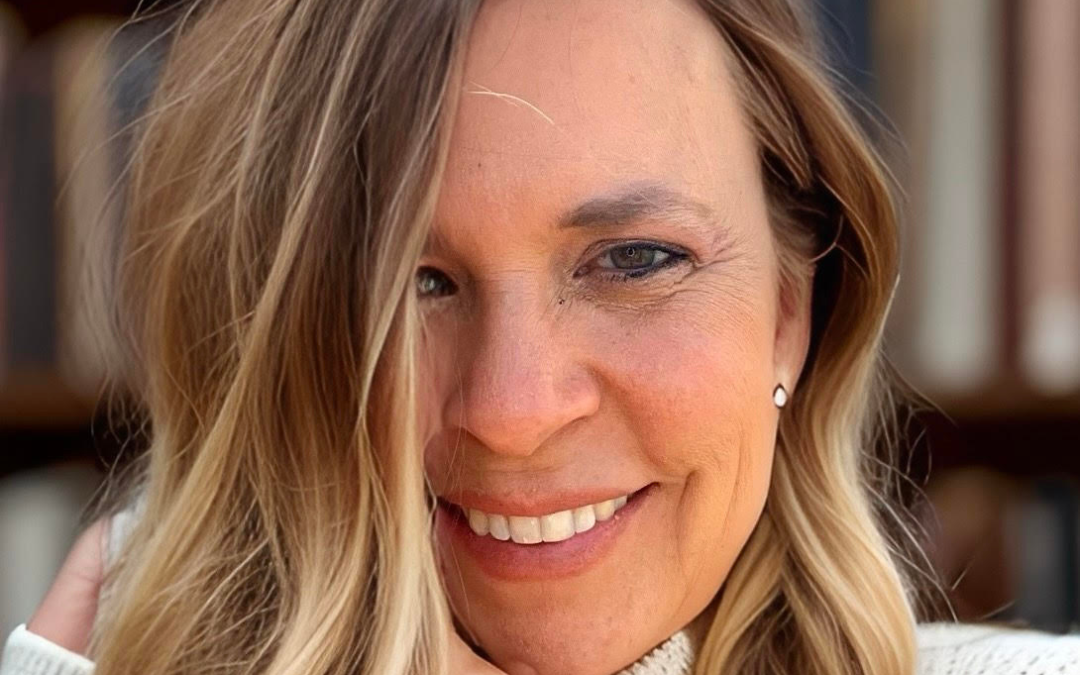
by Guest | May 7, 2025 | Being Well, Featured, Uncategorized
Written by: Denise Donohue
Ever get that awful pit in your stomach? Or feel your heart start to race, sweat bead up on your forehead, or a wave of nausea hit out of nowhere? Yep—welcome to anxiety.
But here’s the thing: these feelings are actually “normal”. Anxiety is our brain’s built-in alarm system. It’s designed to protect us from danger, whether it’s real or perceived. Back in caveman days, this alarm system kept our ancestors alive. Imagine they’re out hunting when a sabertooth tiger appears. If their brain didn’t sound the alarm—triggering anxiety to prepare them to run or fight—they might have ended up as lunch.
The tricky part is… our modern brain doesn’t know the difference between a life-threatening tiger and a traffic jam, a stressful email, or a heated conversation with someone we love. To your brain, it all feels like danger.
When anxiety hits, your brain kicks into what we call “fight, flight, or freeze” mode—or as I like to say, ” The F3 Mode”. And not only do you feel physical symptoms, but you may also notice changes in your behavior. You might:
– Isolate yourself
– Shut down emotionally (freeze)
– Lash out or become irritable
– Reach for something comforting—like food, alcohol, or a distraction
The good news? You’re not broken. You’re human. And anxiety, while uncomfortable, is something we can understand and learn to manage with the right tools.
So What Can You Do When Anxiety Hits?
When that overwhelming feeling creeps in—your heart racing, your palms sweating, your brain shouting “DANGER!” even though you’re just checking your email—it’s time to gently take the wheel back from your inner sabertooth tiger alarm system.
Here are some practical steps you can take the moment anxiety starts to take over:
1. Pause and Name It
Start by saying to yourself, “Okay, I’m feeling anxious right now.” Just naming it can help. You’re not weird, broken, or weak—you’re experiencing a totally normal response. Anxiety doesn’t like to be ignored, but it also doesn’t love being calmly called out either. It takes away some of its power.
2. Breathe Like a Pro
Seriously—two slow, deep belly breaths. Not the kind of shallow chest breaths you do when you’re pretending everything’s fine. We’re talking big, slow inhales that make your belly rise, followed by long, slow exhales that say to your brain, “We are not in actual danger right now.”
3. Catch the Thought – and Flip It
Ask yourself: “What thought just zipped through my head?”
Was it something like, “I’m totally going to mess this up”?
Flip the script:
Try, “I’m doing my best, and I can do hard things”
That tiny shift can change how you feel and what you do next.
4. Do the Opposite Action
If your anxiety wants you to hide in bed all day…put on real pants (yes, actual pants) and step outside—even if it’s just for five minutes. If your brain is telling you to avoid that awkward conversation? Write down what you would say, even if you’re not ready to say it yet. Doing the opposite of what anxiety demands gently reminds your brain that you’re the boss.
5. Be Kind to Yourself (Really, You Deserve It)
Your anxious brain is working overtime trying to protect you. So instead of judging yourself, try saying, “This is hard, but I’m handling it.” That little boost of self-compassion is one of the most powerful tools you have.
Final Thoughts: You Are Not Your Anxiety!!!
Anxiety might be loud, messy, and dramatic (kind of like that one friend who always thinks everything is a catastrophe). But it doesn’t get to run the show. You’ve got tools. You’ve got awareness. And now—you’ve got a plan.
The more you practice, the easier it becomes to pause, breathe, reframe your thoughts, and take small steps toward calm. You won’t always get it perfect, but the goal isn’t perfection—it’s progress.
Need a little extra support?
If anxiety is something you’re ready to tackle with more guidance, you’re not alone—and you don’t have to figure it out on your own. Denise Donohue is a life coach who specializes in working with teens and women. Learn more about Denise at www.optimallifecoachingforteens.com
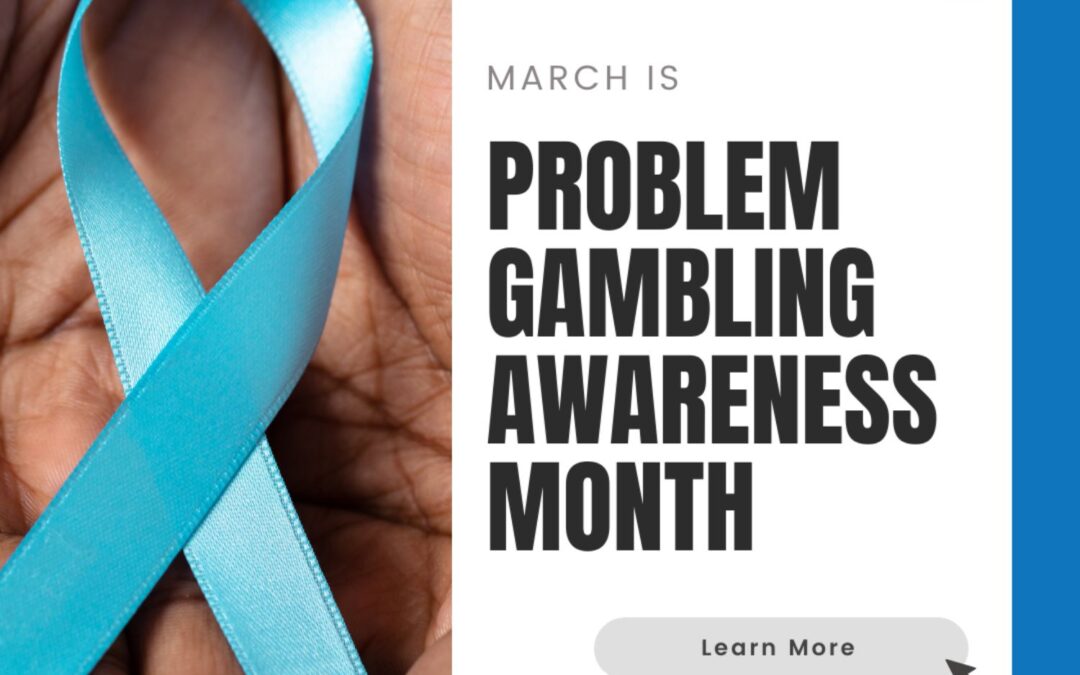
by Guest | Mar 24, 2025 | Being Well, Featured, Uncategorized, Work Well
Written by: Sarah Ermer, MPH, CHES; Prevention Specialist at Tillamook Family Counseling Center
March is Problem Gambling Awareness Month, and when it comes to a behavior that can cause significant harm and remain hidden so easily, awareness is key. You may only picture gambling addiction as someone losing their life savings at a casino, and while many still experience gambling addiction in this way, gambling today takes more forms than it did even a decade ago. Technology has changed gambling, access to gambling, and how addiction takes hold—sometimes in ways we don’t even recognize.
If you’ve ever found yourself mindlessly scrolling through social media, telling yourself “Just one more minute” only to realize an hour has passed, you’ve experienced how technology can hijack our attention. Social media platforms like TikTok, Instagram, and YouTube Shorts use algorithm-driven content and intermittent rewards—features that stimulate the brain’s reward system much like gambling. Every swipe holds the potential for something exciting, unpredictable, and engaging. This taps into something psychologists call our variable reward system, which is the same mechanism that drives gambling behaviors. The uncertainty of what’s coming next (a viral video, a big payout) keeps us engaged far longer than we intend. This is why gambling addiction, like social media overuse, isn’t simply about willpower. It’s about the way our brains are wired for reward and reinforcement.
Let’s zoom out a little more, beyond gambling and social media, to another related pastime: video gaming. Though distinct activities, the line between gaming and gambling is becoming blurred. Many video games have features that replicate or explicitly mimic gambling. Spin-to-win rewards and loot boxes where players can pay real or in-game currency to win an unknown prize are both examples of how video games are exposing younger and younger players to the hook of gambling, not to mention games where players can enter and gamble within virtual casinos. And the younger a person is exposed to an addictive behavior, the more likely they are to experience addiction later in life. That’s why some countries, including Belgium, the Netherlands, and Australia have restricted or banned loot boxes from video games.
Moving back to the present-day landscape of gambling itself. Gambling is no longer confined to casinos or lottery games. In 2019, Oregon legalized sports betting, allowing people to place wagers anytime, anywhere via their smartphones. While convenient, this also means that gambling addiction can develop in secrecy. Someone could lose thousands of dollars without ever leaving their home. The accessibility of gambling apps makes it easier to engage impulsively, making problem gambling harder to recognize until significant harm has occurred.
Sports betting platforms, casino apps, and online poker sites are designed to keep users playing, using features like quick deposits, loss-chasing prompts, and VIP rewards. Without physical cash changing hands, it’s easy to underestimate losses. And because gambling doesn’t leave visible signs like drug or alcohol misuse can, it’s often called the “hidden addiction.” That’s why it is necessary to learn the warning signs of gambling addiction, both in ourselves and others.
Warning signs of gambling addiction can include:
- Spending more and more time gambling
- “Chasing” losses with more gambling
- Feeling the need to bet more money to feel the same excitement
- Creating special occasions for gambling (canceling other plans)
- Frequently borrowing or losing money with no clear explanation
- Mood swings, anxiety, or depression linked to gambling outcomes
- Feeling restless or irritable when trying to cut back
If you choose to gamble, these steps can help minimize harm:
- Decide in advance how much time and money you can afford to spend, and stick to that limit
- Avoid chasing lost money. The more you try to recoup your losses, the larger your losses will be.
- Make it a private rule not to gamble on credit. Don’t borrow money to gamble.
- Avoid gambling under stress. Don’t gamble as a way to cope with physical or emotional pain.
- Take breaks. The longer you play, the harder it is to stick to your limits. Step away regularly.
- Know when to walk away. If gambling stops being fun or causes distress, it’s time to stop.
Lear more warning signs and safer gambling guidelines by visiting OPGR.org.
I hope this article can be your introduction to learning about gambling harm and addiction. A few sentences about gaming or sports betting doesn’t begin to cover the depth of the issue, and there is always more to learn.
Remember, gambling addiction isn’t just a matter of willpower, and help is available. If you or someone you know is experiencing gambling harm, help is free and confidential. Go to OPGR.org, or call 1-877-MY-LIMIT.
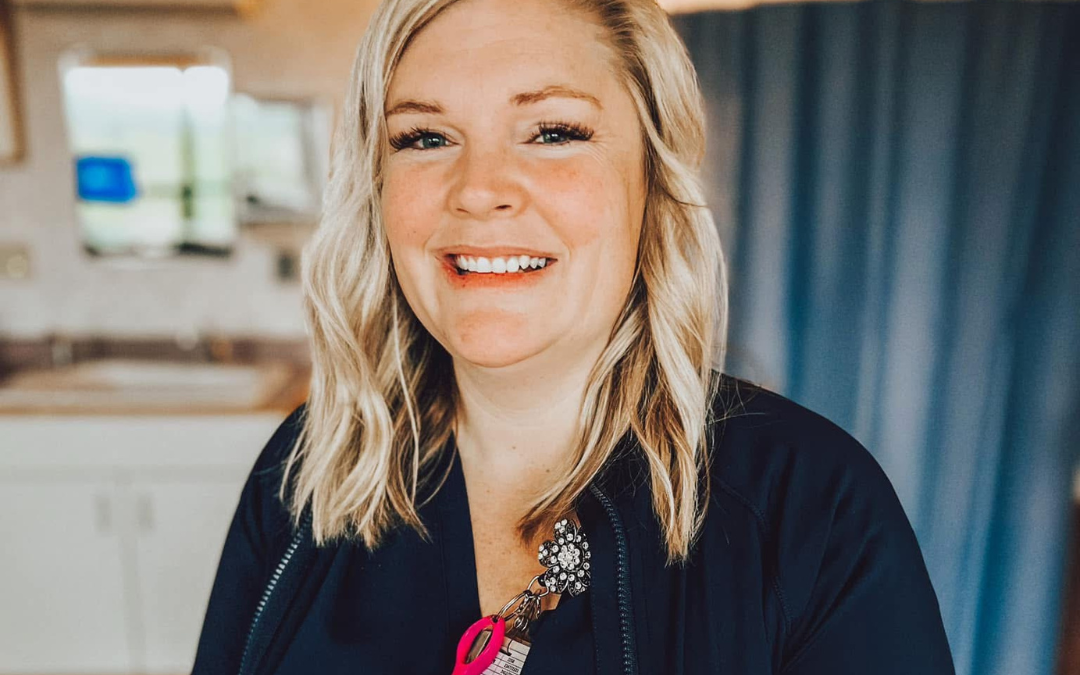
by Guest | Feb 26, 2025 | Featured, Work Well
Written by Marian Johnson
In 2005, my husband, two children, and I moved to Hebo, Oregon, in search of a fresh start. We lived in the front room of single-wide trailer. The bathroom floor had collapsed, and holes in the walls made life challenging, but even then, we felt blessed. Compared to many of our neighbors, we were fortunate to have one of the few working bathrooms in the area.
At the time, my three-year-old son, Trevon, wasn’t speaking yet, which led us to enroll him in Head Start in Beaver, Oregon. He was also picked up by Northwest ESD Tillamook for additional services later in the day. Tre started attending Head Start to address his developmental needs, but what I gained from the experience was far more than I ever expected.
Every day, a small bus would pick up Trevon from our trailer. They kindly made room for me and my one-year-old daughter as well. Head Start didn’t just serve Tre—they fed all three of us and offered me invaluable guidance on how to move forward with my life. They counseled me on returning to school and taking steps to improve my family’s situation.
Even though Trevon went to Tillamook for part of the day, the bus would drop my daughter and me back home, where we waited for his return. It was during those quiet hours, sitting in the front room of that trailer, that I made the decision to enroll in nursing school. It wasn’t an ideal time—without stable housing and with two small children—but I knew it was a step I had to take.
The challenges didn’t end there. We eventually moved to Tillamook, but we lost our home again and were forced to live in a motel funded by the CARE office until they could help us find stable housing. When we finally moved into a house, it felt like a turning point. I still live in that home today, and I’ve even been able to purchase it—a symbol of everything we’ve fought for as a family.
Today, I sit here as the manager of a labor and delivery unit. This achievement wasn’t mine alone; it’s the result of the countless people and organizations that supported me during those difficult years. From Head Start and Northwest ESD to the Oregon Food Bank, CARE, and many others, these groups surrounded my family with warmth, meals, encouragement, and hope. They didn’t just help us survive—they empowered me to dream and take action for a better future.
Sixteen years later, I reflect on how blessed I am to have been part of such an incredible community. I’ll never forget how much these organizations helped me when I had nothing to give my children for Christmas or how they provided food and shelter when everything else seemed to fall apart.
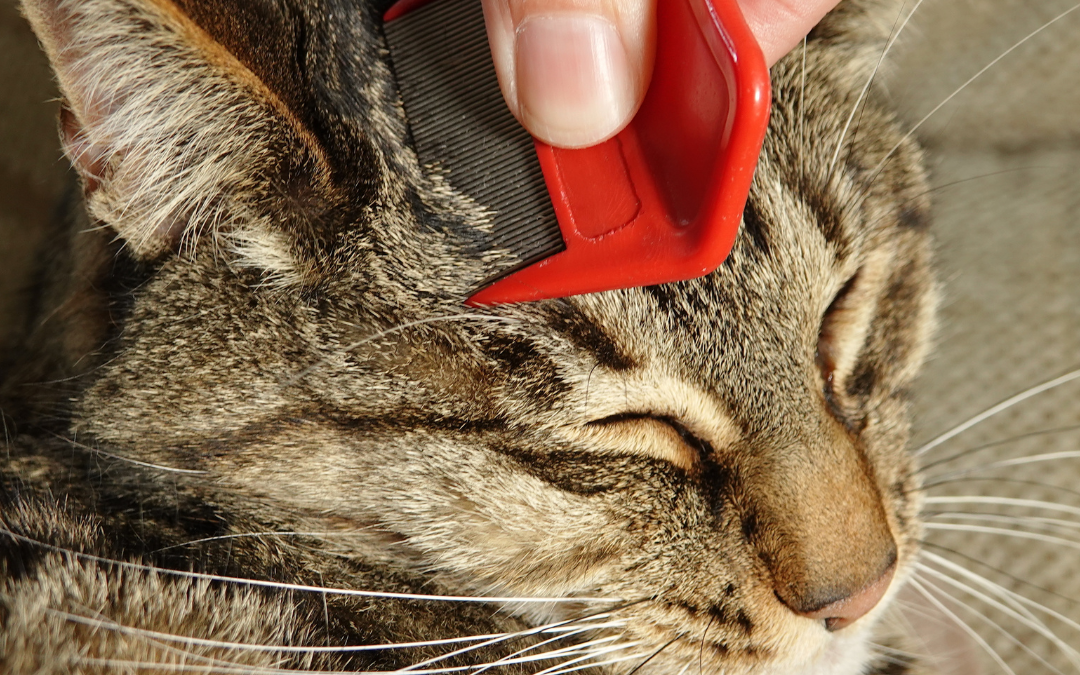
by Renee Aufdermauer | Dec 5, 2024 | Featured, Uncategorized
Our pets bring joy, companionship, and a sense of well-being to our lives, playing a key role in our overall wellness. Whether it’s a wagging tail greeting us at the door or the soothing purr of a cat, pets help reduce stress and enhance our happiness. However, when fleas invade their space—and ours—it can quickly become a source of stress and frustration. Fleas not only irritate our pets, causing itching and discomfort, but they can also become a nuisance for the entire household. Taking proactive steps to manage fleas helps ensure that the wellness our pets provide is not overshadowed by the challenges these tiny pests bring.
While fleas can be a challenge, there are effective, budget-friendly, and non-toxic ways to tackle the problem. Fleas not only discomfort pets but can also impact human health and the home environment. Thankfully, with consistent effort and the right approach, you can control fleas without resorting to expensive or harmful treatments, keeping your pets and your home a haven of wellness.
Understanding Fleas and Their Lifecycle
Fleas are small but tenacious insects that thrive in warm, humid environments. They go through a complex life cycle with several stages, including eggs, larvae, pupae, and adults. Each stage can resist typical insecticides, which is why it’s important to address fleas at all stages of their life cycle to fully eliminate them. According to the CDC’s guidelines on flea control, a comprehensive four-step process is the most effective way to manage a flea infestation.
The Process to Manage Fleas in Your Home
Sanitation:
Thorough cleaning is the first and most important step in controlling fleas. Fleas and their eggs can hide in pet bedding, rugs, carpets, and even along the edges of walls. To break the flea life cycle, wash all bedding, rugs, and pet bedding in hot water, then vacuum thoroughly, including floors, carpets, and areas along walls. Sweep hard floors and vacuum often to pick up any stray fleas or eggs. This helps to reduce the flea population in your home without relying on toxic chemicals.
Pet Treatment:
It’s essential that every pet in the household is treated. Start by bathing your pets with soap and water to gently kill adult fleas. After the bath, use a flea comb to remove any remaining fleas, paying close attention to the face, neck, and area in front of the tail. Be sure to consult with your veterinarian to choose the best non-toxic flea treatment for your pets. There are many natural flea treatments available that don’t contain harsh chemicals, and your vet can guide you on the safest options.
Home Treatment:
Home treatment should begin at the same time as pet treatment to ensure that the flea life cycle is disrupted. While commercial pest control applicators can provide professional help, there are also natural home treatments available, like diatomaceous earth (food grade), which can be sprinkled around areas where fleas tend to hide.
Follow-Up:
Fleas are tough and resistant to insecticides at various stages of their life cycle. To fully eliminate fleas, you’ll need to follow up with additional treatments. The CDC recommends that you apply two or more follow-up treatments within 5-10 days after the initial treatment. Continue regular vacuuming and cleaning during this period to pick up any remaining eggs and juvenile fleas that might have been missed in earlier treatments.
Fleas are a common challenge for pet owners, but with the right approach, you can manage them without relying on expensive or toxic products. By following the CDC’s four-step process and integrating natural flea control methods, you can protect both your pets and your family from these pesky insects. Regular cleaning, pet treatments, home interventions, and follow-up care are essential to breaking the flea life cycle and keeping your home flea-free.
For more information visit: https://www.cdc.gov/fleas/section-name/index.html
For more local health and wellness information, visit www.tillamookcountywellness.org or follow Tillamook County Wellness on Facebook and Instagram.
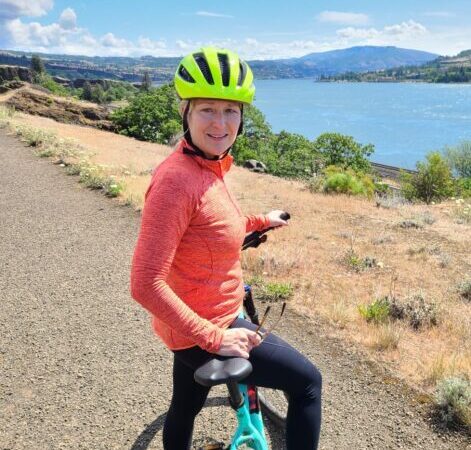
by Michelle | Nov 1, 2024 | Being Well, Featured, Move Well, Why I'm In
Why I’m “in” with Wellness
Michelle Jenck, Well-Being Director, Adventist Health Tillamook and Tillamook County Wellness Coordinator
Wishing for Wellness
I was recently asked how I came to be involved in wellness work. I’d like to say I was a lifelong fitness enthusiast but that isn’t true. As a child, I wanted to be physically fit and athletic but, alas, it was not in the cards for me. Severe asthma left me breathing into a brown paper bag on the sidelines and a debilitating eye condition called amblyopia, (my left eye is nearly blind), meant that, with no depth perception, I was to forever be, the “last one picked for the team.”
During middle school, I was too young to work, old enough to be home by myself but idle enough to have begun getting in trouble (serious, trouble). My saving grace was wandering into a YMCA to kill time after school. I started going to the weight room and pushing weights around. I had no idea what I was doing but kind people showed me what to do and what muscles I was working. It felt so good to feel a sense of control moving my body. I could push heavy things on purpose and muscles would form in places that were once squishy bits. It was like magic.
The best part was how weight training made me feel emotionally. I felt happier and gained a sense of control (something I have learned we need for good mental health, called a “locus of control.”) My self-esteem improved. I could set goals for myself and work to reach them, building successes I never believed possible for myself. I pursued weight training all through high school and was one of a few girls that joined the school’s newly formed competitive power lifting team.
My senior year in high school, I decided maybe I could push my body in other ways and began my first attempts at running. Initially, I “ran” 1-2 blocks and then sat on a curb breathing into a paper bag until my asthma attack subsided enough to slowly walk home. Tenacious and undaunted, I kept after my goal, gradually working my way up to running 2-3 miles at a time, and ultimately up to 6 miles over as many years. Running, even at a slow pace, helped me burn off stress and was a convenient way to get in a quick bout of exercise when I didn’t have time to hit the gym.
Working in Wellness
Through high school, college and into my young adult life, exercise was a staple. I tell people it should be like brushing your teeth; something you do every day without even thinking about it, because it is so ingrained in your routine.
As a stay-at-home mom, I was taking classes at the Tillamook YMCA, grateful to spend time among adults. One day, I made the fateful decision to ask Jeannie Christensen if there was ever going to be a step aerobics class offered at the Y. Like so many things in a small town, the answer was, “why don’t you start one?” Thus began a nearly 30-year career of teaching many different exercise disciplines.
I loved (and still love) teaching fitness classes. It is a way to give back, helping others experience their best life. Over all these years I have seen fitness change people from the inside out. That “locus of control,” it turns out, is an important component of life success and resilience. When we become aware of and gain control over moving our bodies, using our minds, it is very empowering.
The A-Ha Moment
By this time, our oldest son had been diagnosed with autism and our lives were changing dramatically. As we worked with our son to help him develop the ability to regulate his emotions and manage the sensory stimuli causing so much turmoil in his mind and body, I discovered magic could be found in movement. The most effective exercises involved movements that strengthened the parts of his brain involved in balance, spatial awareness and motor planning. How interesting, I thought. The same could be said for teaching a step class.
Teaching adults how to move, while helping our son re-wire his brain with movement, turned out to generate an “a-ha” moment of monumental proportions. As I began to understand how the brain is formed and how it changes with regular physical activity, I began to consider the larger implications of what I was learning. What could this mean for other children? For anyone who wanted to be more physically coordinated, better regulated, smarter and more successful?
Armed with this discovery, I decided to go back to school to pursue a Master of Education in Health & Kinesiology. Graduating in 2012, I used my degree to expand exercise programming at the YMCA, adding Tai Chi: Moving for Better Balance, which over 300 older adults took in 2014. The following year, I was tapped to help lead a community effort to focus on reducing chronic disease in Tillamook County, which led to the formation of Tillamook County Wellness.
My Hopes for Wellness
I am very grateful for my experiences and the opportunity to influence health at both the individual and population level. As I enter my ninth year as coordinator for Tillamook County Wellness, I am looking ahead; or better yet, I am looking further “upstream.” So much of what contributes to wellness can be found between our ears. The mind. The brain. The connection between the brain and the body. This is where wellness starts. And it starts early in life – in the womb, in fact. Nearly 90% of a child’s brain is developed by the age of three and much of that development depends on movement.
My hopes for wellness are that we will begin to prioritize proper movement, nutrition and secure relationships during this critical window of childhood development. Do I have ideas for this? You bet I do and I can’t wait to keep working on wellness!





